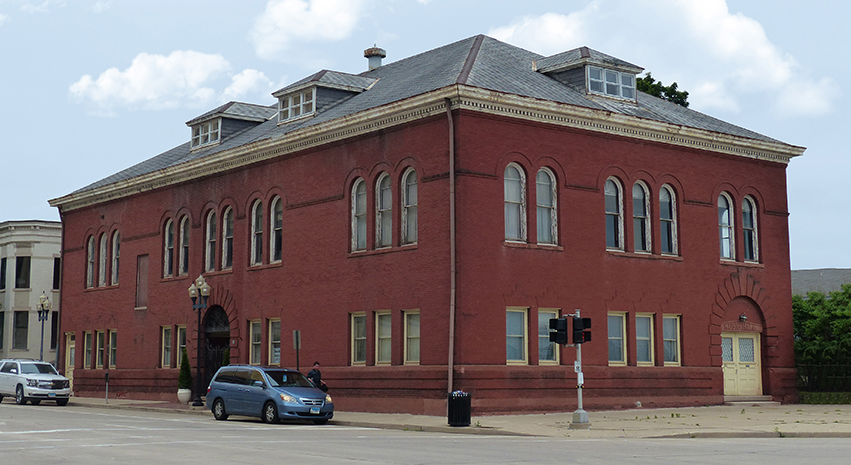Protecting Peoria’s Historic Properties

One way to preserve local history is by protecting historic locations and buildings. In the City of Peoria, the primary laws governing historic preservation are located in Chapter 16 of the Peoria Code of Ordinances entitled “Historic Preservation.” The policy underlying this chapter is to preserve, enhance and continue in or restore to use those properties and improvements having special historical, architectural, community or aesthetic significance.
Historic Preservation Commission
Section 16-36 of the Historic Preservation Chapter establishes a seven-member Historic Preservation Commission comprised of a licensed real estate broker, at least one representative of the Peoria Historical Society, at least one licensed architect, and four at-large members who have demonstrated an interest in historic preservation.
All of these members, with the exception of the licensed real estate broker, must be residents of the City of Peoria. They are appointed on the basis of demonstrated expertise, experience or interest in the areas of anthropology, architecture, art, building construction, engineering, finance, historical and architectural preservation, history, law, neighborhood organizing, planning or real estate. The Mayor of Peoria appoints the members of the Commission (subject to City Council approval), and said members serve three-year terms.
The Historic Preservation Commission has a number of powers and duties, some of which include:
- Recommending to the City Council the designation of local landmarks and historical districts;
- Keeping a register of all property and improvements which have been designated for preservation;
- Engaging in mutual cooperation with other City departments and commissions on matters affecting the property and improvements which have been designated for preservation;
- Making suggestions and recommendations relative to the nomination of designated property and improvements to state and national registers; and
- Acting as conservator of, and suing on behalf of, any landmark or historic district when it appears to the Commission that the interest of the public in said landmark or historic district is in need of protection through the exercise of litigation.
Criteria for Historic Designation
In order for a nominated property, structure or area to receive the designation of a local historic district, historic structure or landmark, the Historic Preservation Commission must determine that it meets three or more of the 10 criteria outlined in Section 16-38 of the Historic Preservation Chapter. Examples include: its character, interest or value as part of the development, heritage or cultural characteristics of the city, the country, the state or the United States of America; its location as a site of a significant local, country, state or national event; and the owners’ consent.
Section 16-86 of the Historic Preservation Chapter further outlines the designation procedure and provides that if the owners of a property do not consent to designation, the Commission shall take no further action with respect to such property and shall not recommend landmark designation to the City Council. Similarly, the Commission only considers designation of a historic district if at least two-thirds of the property owners in the area have responded to the application by submitting a letter of consent approving the designation of their property as part of a historic district.
Designated historic districts, historic structures and landmarks in Peoria include the Moss-High Historic District, Perry Avenue Historic District, Peoria Women’s Club and McClure Branch Library. The McClure Branch Library received its designation as a local historic landmark by City Council approval in 2014, as it fulfilled five of the 10 aforementioned criteria.
Once a property or landmark is designated for historic preservation, any alterations or demolitions of such property or landmark must comply with the guidelines of Sections 16-61 through 16-66 of the Preservation Chapter, which include standards and criteria for improvements, buildings and structures, such as porches, windows, driveways, roofs and landscaping. Section 16-63 specifically outlines the application and approval process to obtain a certificate of appropriateness from the Historic Preservation Commission to make any such alterations or demolitions to designated properties.
The City of Peoria, pursuant to its historic preservation ordinances and its Historic Preservation Commission, aims to protect the historically significant areas and buildings in Peoria and to prevent their destruction and alteration so that future generations may come to appreciate their uniqueness. PM
Teresa M. Dickinson is an attorney with Quinn Johnston in Peoria.
